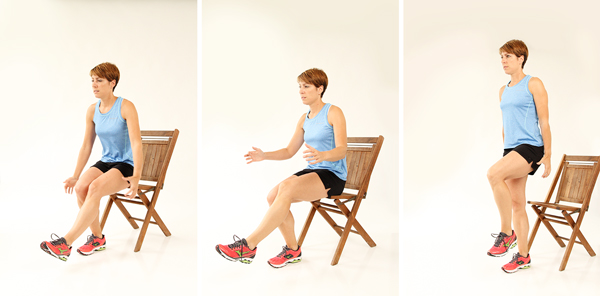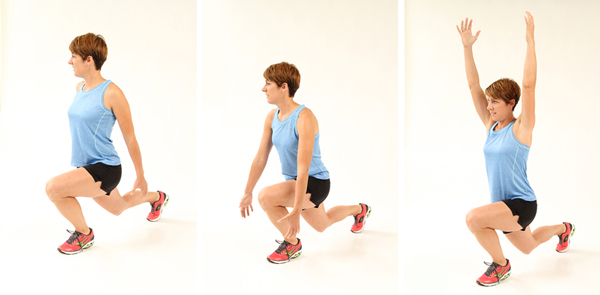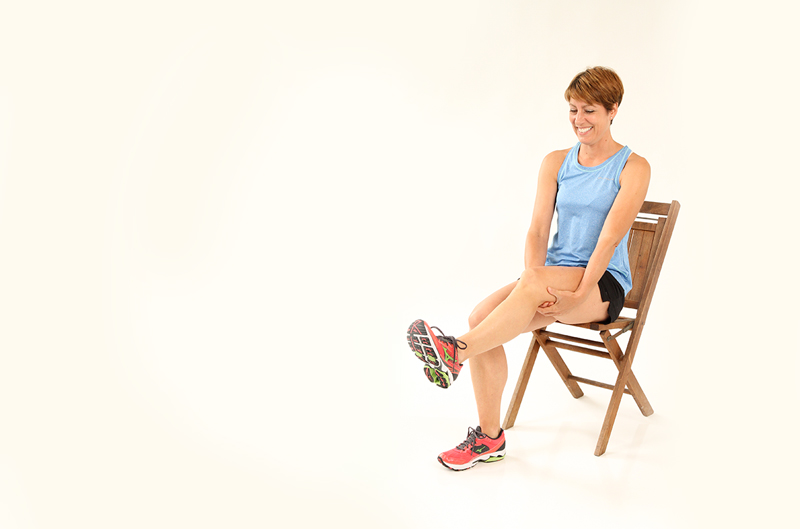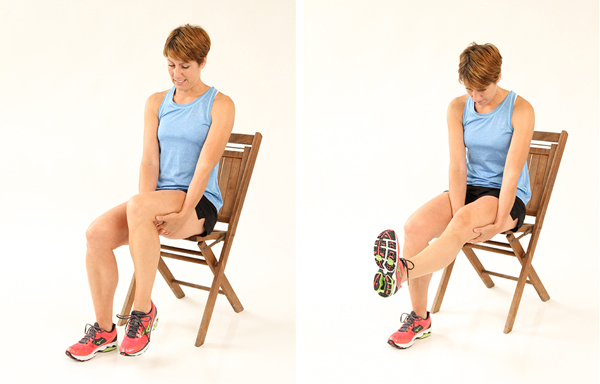Written by Dr. Daniel Shaye
—
The foundation of most hamstring injury prevention is warm-up. Typical hamstring strains come during high-intensity efforts, not during a jog around the block. Be sure you’re fully warmed up before launching into a hard effort or race. In doing so, you’ll be ahead of the game by easing into your efforts.
Prevention Tips
Put it in reverse. No, I don’t mean your car—I’m referring to your body. If your run involves a track, consider reversing directions periodically. This may be an issue on a crowded track where counterclockwise is the norm, but when I do a lot of repeats on a track or course I prefer to run some of them in the reverse This balances out some of the stresses on the legs, especially around the curves where leaning in to fight angular momentum is normal. If you have a weaker or less coordinated direction, save your hardest efforts for the side better suited to handle the stress.
Get strong. Weak muscles won’t serve you well in any sport. Are your extensor muscles strong enough? Try this: lie with your thighs and legs on a bench or table, your upper torso off the table, with a partner holding your ankles. Hold your body perfectly straight. You should feel your back extensor muscles, and quite likely your glutes and hamstrings. Can you hold this position for a full minute without fatiguing your hamstrings or spinal muscles? Can you hold it for three minutes? A basically competent athlete should be able to hold this position for a full minute without excess strain. A highly fit one should be able to go up to three minutes. If you find yourself struggling, consider working your extensor muscles, both back extensors and hamstrings along with the gluteus maximus. You may also decrease your risk for back pain.
Get coordinated. Hamstrings don’t always strain because they’re weak. They may strain because the right dominates the left, or because the lateral set is weak compared to the medial pair, or because they are weak compared to the quadriceps. They may also strain because they don’t turn on when they’re supposed to, or don’t turn off enough when they need to. Hamstrings do something called “paradoxical extension,” actively contracting along with the quads while the foot is on the ground-based portion of the running gait. Training hamstring, quads and related muscles to function efficiently and together may be called “neurological patterning.” Think of it as teaching the instruments of your body’s “orchestra” to play together under the supervision of your “conductor”—your central nervous system. I especially like to train this through three exercises: the 1-legged squat, the lunge and hip flexion exercises. The first two teach the hamstrings to function even as their antagonists are active. The last one teaches the hip flexor muscles to activate, reflexively telling the hamstrings to take a back seat as their antagonists take over. [See images under “Hamstring-Friendly Warmups”]

Get aligned. The low back and hips relate directly to the hamstrings. A fixated or “stuck” sacroiliac joint, for example, can inhibit normal pelvic and hip extension, causing hamstrings to have to work overtime or inhibiting them due to subtle pain signals. Dysfunction of joints in the low back, or even disc problems, can also wreak similar havoc. Get structurally aligned before launching into an exercise program that might ingrain your problems. Remember, practice doesn’t make perfect—perfect practice makes perfect.
Hamstring-Friendly Warmups
I mentioned warm-ups earlier. No, I don’t mean do anything that takes hours, or anything too complicated. Here’s my warm-up routine, for example:
1. Move. If you’ve been off your legs before your run (in a car, or in your bed), start by just walking about or literally shaking a leg or two. Get used to the movement.
2. Neuro mobilizations. Perform some gentle neuro mobilizations of your hamstrings and the sciatic nerves (the large nerve trunks down the backs of your thighs). Sit on a step or bench and straighten out one leg, then the other a couple times. Do the same with your head and trunk slightly flexed, which will tension the nerve and hamstring a tad more. Don’t do this to excess, just enough to wake up the area and give it signals that it needs to move, freely.
3. Lunge. In a forward-facing stance, feet at shoulder width, step out with one leg in a gentle lunge stance. Then, maintaining balance and control, reach forward and brush the ground by your forward foot, followed by raising both arms overhead in an arc (it’s a nice stretch for a stiff neck and back, too). Feel the quads, the glutes, the core and the hamstrings all active throughout the motion. Then do the same on the other side. Do a little sideways movement, gently waking up the full range of muscles around hips, thighs, and ankles.

4. Begin running—gently. Don’t worry about your pace for the first couple of minutes, however embarrassingly slow it may be. In fact, it may be a couple miles before you’ve hit stride and rhythm.
You’ll note that there’s not a lot of static stretching in this warm-up. The goal is to seek overall flexibility and exquisite control, not to become a stretching legend or yogi.1 Easy motion is the majority of warm-up; and inherent in motion is some stretching. If you want to work on flexibility, do so after your run, or take a yoga class (or better yet, both).
Do what feels right for you. If what works for me doesn’t suit you, create your own routine. And if nothing seems to work, seek professional help—(see prior column under “Treatment Options“).
I’ll see you on the roads and trails, my friends.
1 Committed to flexibility work, to the point of excess? Consider that certain forms of INflexibility (no, that’s not a typo) are correlated to improve running performance. Perhaps I’ll visit that topic in a future column.



